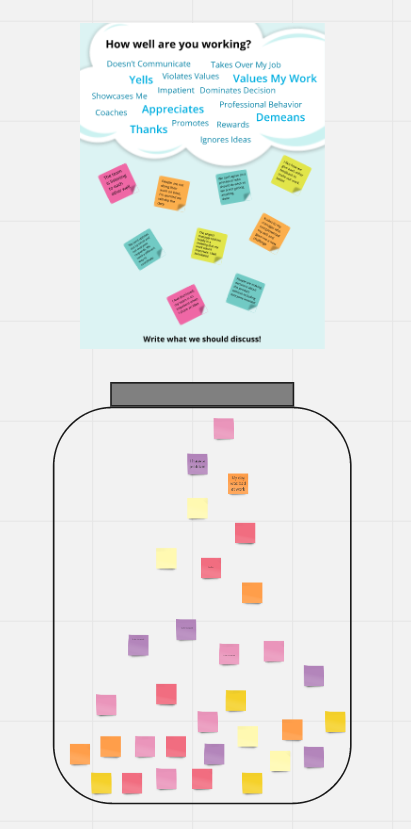The Batman Jar! The Team is the Superhero!

Any product team or creative meeting can get off track. We know that one reason chaos happens in meetings is because they lack clear goals, roles, and practices. Or they have no moderator or rules for how to share airtime. But sometimes, and especially for women and other underrepresented people, the problem is how we interact with each other. The Valuing and Jerk Project has taught us the kinds of behaviors we want to encourage and those we need to discourage so every team member can do their best work. Diverse teams can only become powerful sources of innovation if everyone feels like they are valued, and safe to contribute.
The Batman Jar intervention helps teams look at how they are doing both with their processes and their interpersonal dynamics. It is related to the Contextual Design practice of a Process Check or the Agile Retrospective in that it collects issues for the team to address. But the Batman Jar has a special focus on interpersonal dynamics – and it is meant to be anonymous. Plus, it is more fun!
The Batman Jar Process
Create a place for your Batman Jar
Display the Batman Jar word cloud and example notes falling from it to give everyone an idea of what they might put in the jar.
- Remote: Download this picture and place it on a virtual whiteboard. Set up a new whiteboard so you can give all participating team members access as guests. Then it should be anonymous.
- Physical: Download the physical poster (just the top) and place it on a wall in a central room. Put a real jar under it to collect the notes. Make an image of your favorite Superhero (if not Batman) and place it inside the jar. Then put sticky notes and pens next to the jar for people to use.
Encourage everyone to put notes in the jar each week
Notes are written to capture what is working and what is not. Keep in mind that the Batman Jar is not a vehicle for blame and accusation. It is a way to safely raise issues that the team can then address. And it can collect shout outs for a job well done or processes now working.
For example, notes can be about valuing behavior or good work by someone, including their name. They can be descriptions of real instances of jerk behaviors or other non-productive behavior that get in the way of team or individual performance, without a name. They can be processes that don’t seem to be working – or those that worked well.
- Remote: Team members write a note by selecting a virtual sticky, writing on in and placing it in the virtual jar.
- Physical: Team members add real stickies to the physical jar over the course of the week.
Weekly the team discusses issues in the jar
Whether remote or physically together, the team gets together to discuss the notes. A rotating team member may read and sort the notes before the meeting to identify overlapping issues. Then run the meeting – have a facilitator!
Celebrate what works first! Try giving out our valuing stickers (virtual and physical). Address what is not working. Read the issue aloud. Then talk about what might underlie it.
- If it is an interpersonal problem, talk about the circumstance around when it happens. See if members are getting into chaos because there is an underlying process problem.
- If people aren’t feeling valued enough; if they are not sharing airtime, getting challenges, and rotating team housework for example, generate ideas to improve how you interact.
- If there are any process problems, generate design ideas to improve it.
- Check out other videos for ideas for how to better manage your team.
Try design ideas for a week
Select some design ideas to try as a group. During the week pay attention to how the changes affect the process and interactions. Put more notes in the jar. Celebrate success and keep redesigning your processes and interactions until they work!
Use the Batman Jar to become a continuous improvement culture. That means tuning your culture, your Team Manifesto, or your rules of engagement. Encourage personal growth goals for everyone to be more valuing and to address interpersonal challenges. Encourage people to apologize when they have a bad day. But sometimes you must as a group simply disallow behavior and ostracize people if they cannot be professional – no matter how much power or how smart they are. You can choose to create a team culture where everyone can thrive.
